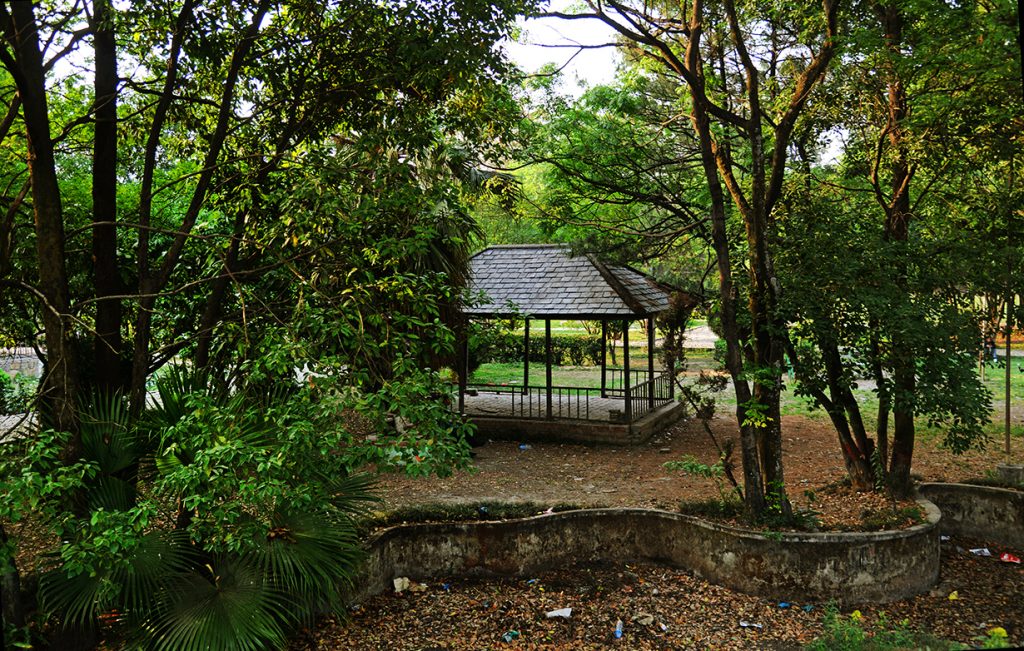
Kathmandu, the capital city of Nepal, is facing a major environmental crisis as it transforms into a concrete jungle. The rapid urbanisation and development of the city have resulted in the loss of green spaces and a decrease in vegetation, leading to a lack of fresh air and an increase in pollution levels. The city’s residents are now calling for immediate action to address the issue and preserve the city’s green spaces for future generations.
The Kathmandu valley in particular has seen uncontrolled population growth in recent years, making urban and peri-urban forestry in Nepal a priority for policymakers and planners.
A case in point
Forest coverage in Nepal varies, with an average of only three per cent in the Kathmandu metropolitan city. In this context, Mayor Balen Shah, like many people around the world, recently spoke on the significance of urban forestry in Nepal, in particular in cities like Kathmandu.
In his speech, Shah emphasised the crucial role that trees and green spaces play in enhancing the quality of life in urban areas. He spoke about the numerous benefits of urban forestry in Nepal, including reducing air pollution, mitigating the urban heat island effect, and promoting mental and physical well-being.
Shah, as a mayor and a structural engineer, also highlighted the need for effective planning and design to integrate green spaces into the urban fabric, ensuring their longevity and preservation for future generations.
Kathmandu Metropolitan City Office is conducting roadside plantation programmes to enhance urban greenery in the city, which will also promote urban forestry in Nepal. Various organisations, including schools, NGOs, and local clubs, have participated in the programmes.
Greening the concrete jungle

Urban forestry is the combination of art and science that manages trees and forests in urban areas, which is now seen as a critical aspect of sustainable urban development. With growing awareness of the positive impact that trees have on the environment, health, and quality of life in urban communities, cities are making efforts to preserve and expand their green spaces.
The role of urban forestry in improving the quality of life in cities, including air quality and social harmony, is widely recognised. It means urban forestry in Nepal and other developing countries is facing numerous opportunities to protect and grow green areas, such as parks, gardens, playgrounds, and more.
These initiatives aim to promote roadside, avenue plantation, rooftop gardening, afforestation and nursery activities, homestead gardening, and social or community forestry in peri-urban areas.
A participatory approach is highly encouraged for maximum success, in which urban dwellers can participate in decision-making and implementation, from choosing tree species to actual planting and tending.
Countering the challenges
Urban forestry in Nepal provides essential green spaces for city residents and improves the overall environment. But along with its development, it faces a lot of challenges.
According to the locals and experts, the low level of public participation is a common concern, with many urban dwellers feeling left out of the decision-making process for these projects. The high population and development pressure in many cities also presents a challenge, as green spaces are often sacrificed for new buildings and infrastructure.
The lack of awareness and education about the benefits of urban forestry, as well as financial constraints, also pose significant obstacles. Poor maintenance and management practices can also contribute to the failure of urban forestry in Nepal. Moreover, inadequate planning and implementation along with incorrect species choice and lack of technical support are further challenges that need to be addressed.
Studies have shown that public involvement increases the survival rate of trees and improves the success of the planting programme. However, without local involvement, residents may view the efforts negatively.
Things to consider

Urban forestry in Nepal must start with an assessment of management needs and opportunities, taking into consideration the direct benefits that communities receive from the projects. Neighbourhood associations and local NGOs should be taken on board in the process. To effectively engage communities, urban forestry initiatives should look beyond the normal city park boundaries to the communities surrounding urban open spaces.
If the government and local communities can work together to address the challenges, there is potential for it to develop. Recommendations include proper management and expansion of existing green areas, the establishment of new green spaces, rooftop gardening, and increased community involvement.
Urban forestry has the power to transform our cities into greener, healthier, and more livable places. It provides numerous benefits, including improved air and water quality, enhanced mental and physical health, and increased community engagement.
As cities continue to grow and face new challenges, it is important that the government prioritise urban forestry in Nepal and invest in programmes that promote and sustain it. By doing so, cities can create vibrant green spaces that benefit both the environment and the people who live in them. It is time to embrace urban forestry and work towards a future where green spaces are integral to the urban landscape, promoting sustainability and well-being for all.
























